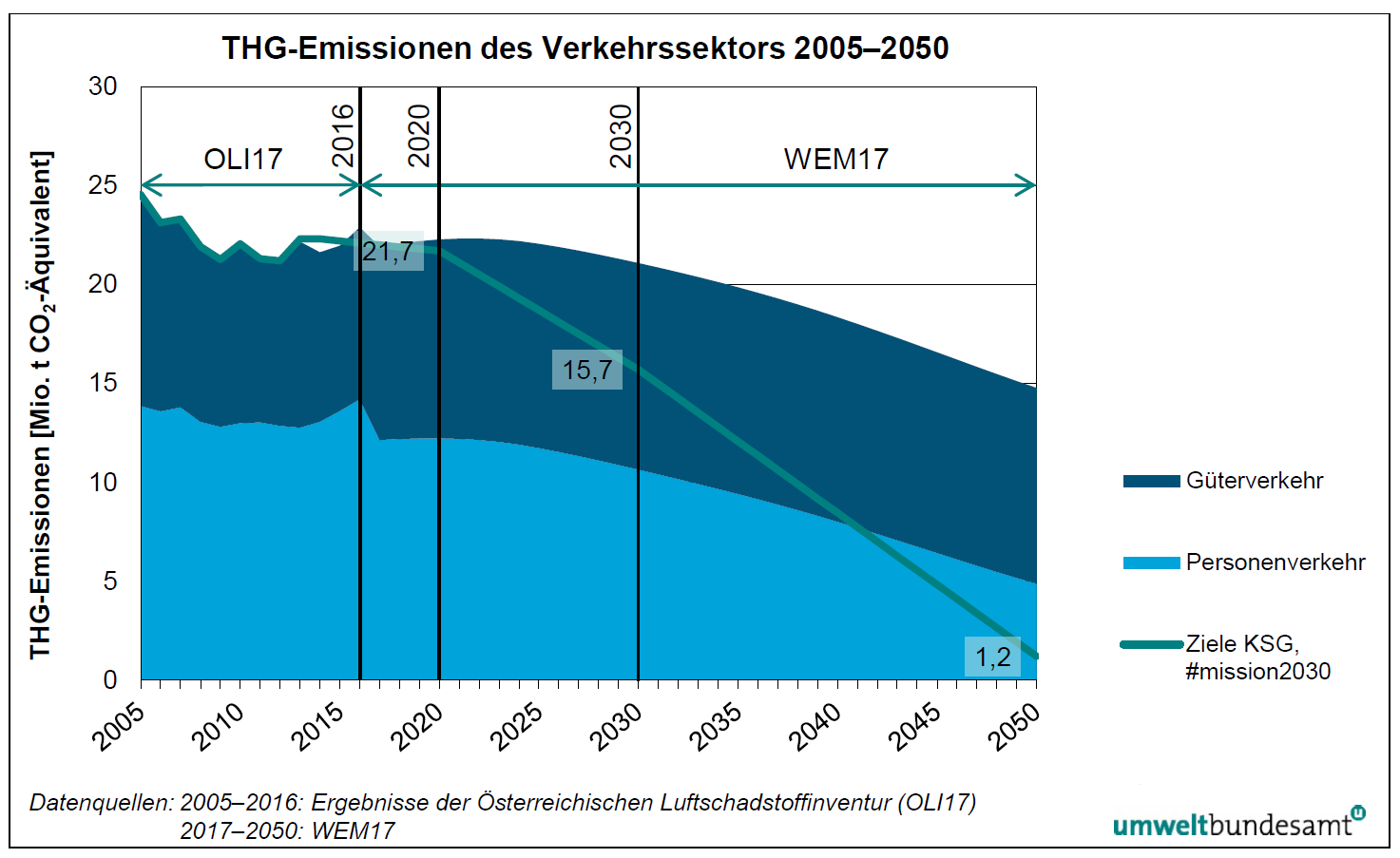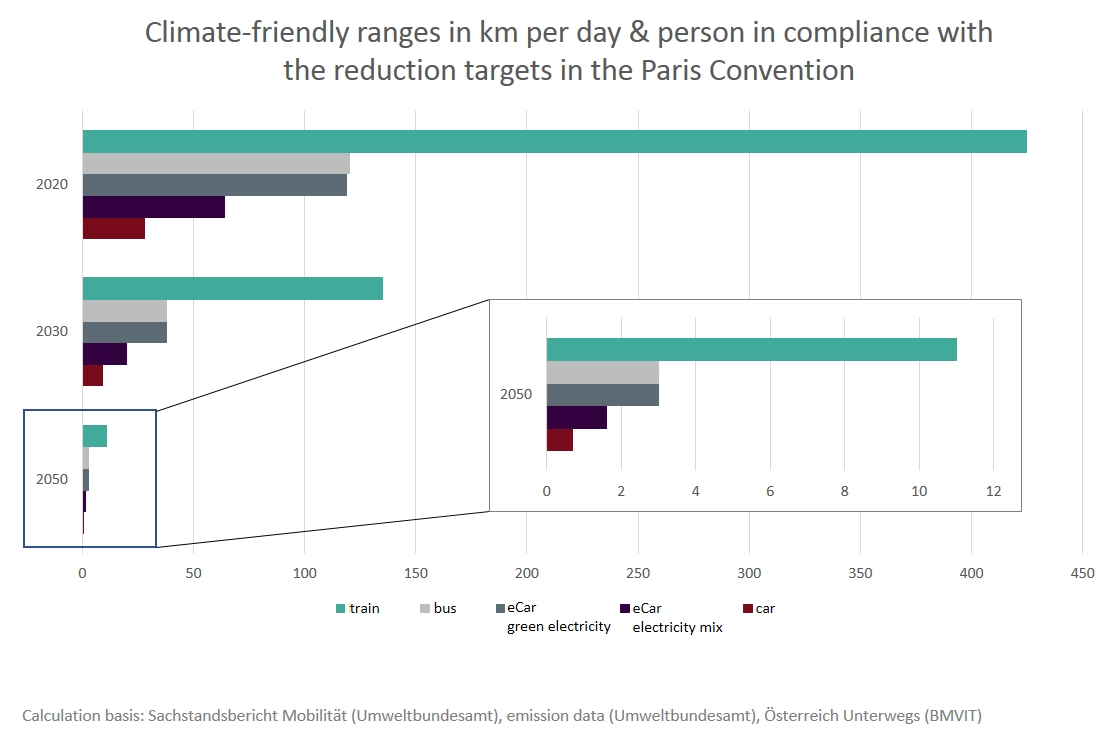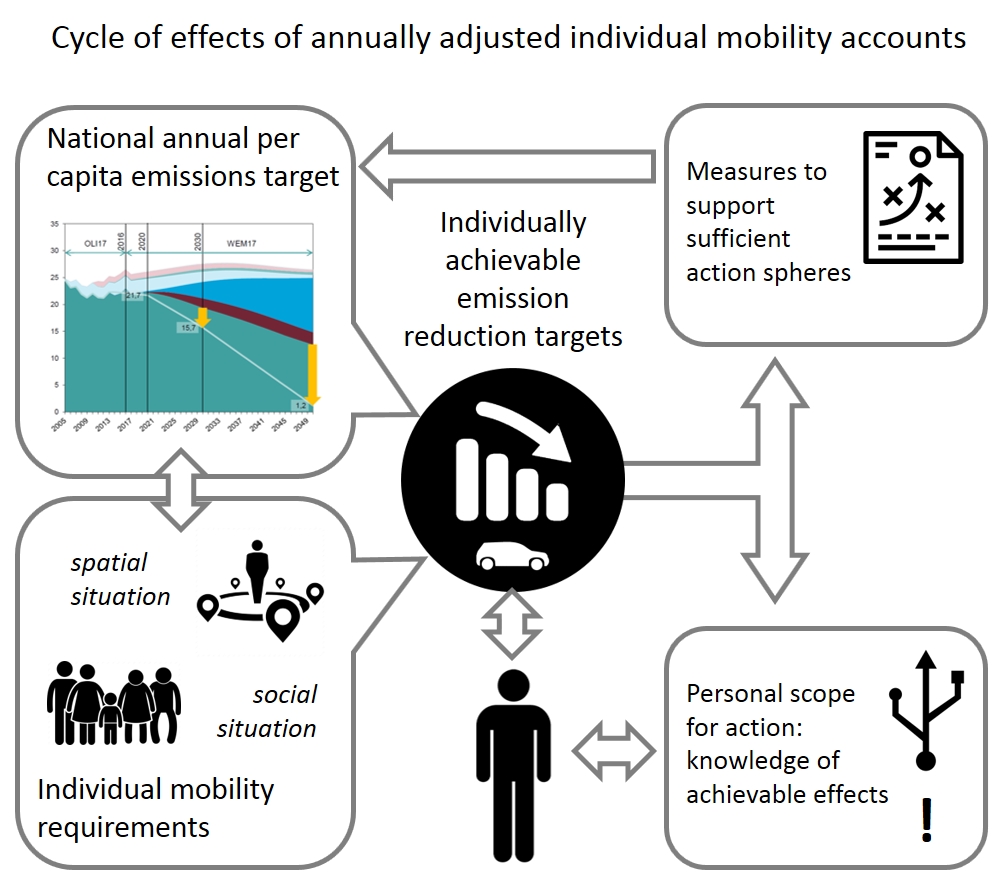A Climate-Compatible Alternative for Tomorrow’s Mobility
How can the often cited transformation in mobility succeed? What does it take to design a climate-compatible mobility system while at the same time satisfying people's needs? Within the framework of the funded exploratory project "mobalance", AIT experts, together with project partners, are addressing these questions and developing a sufficiency-oriented mobility vision based on the concept of a so-called mobility budget.
From "fast-higher-wider" to "more sustainable-fair-moderate"
To drive, fly, go wherever we want or have to, is both a desire and something we take for granted. Having everything available at all times is a demand of the globalised world we are confronted with. For many years decision makers in economy and politics raced to advance their visions, products and services under the motto “faster-higher-further”.
Today, however, a paradigm shift is on the horizon: The mobility of people and goods is undergoing a fundamental change. The decisive factors here are clearly defined ecological targets such as the Paris Agreement and the resulting amount of CO2 that can still be emitted until 2050 without jeopardising the temperature target. We therefore urgently need to rethink the mobility system in the sense of sustainability.
The development of a sufficiency-oriented vision of mobility could be a key element of mobility transformation. In the transport context, the introduction of an individual mobility budget would significantly support such a development – with the aim of bringing about a moderate and conscious handling of mobility in order to limit transport to a socially and ecologically acceptable level. This would, however, have a significant impact on people’s lives and would entail a number of economic and social challenges.
Source: Umweltbundesamt, Sachstandsbericht Mobilität; download: https://www.umweltbundesamt.at/fileadmin/site/aktuelles/2018/ssb_endpraesentation-2018.pdf
A sensible design of mobility by applying the sufficiency principle?
In the feasibility study "mobalance" the characteristics and application options of such an individual mobility budget are worked out on the basis of this approach. For example, it is under discussion in what way individual life situations (advantaging or disadvantaging different groups and spatial types) and purposes of mobility (work-related and personal trips) can be integrated into such a concept. Central questions in this context are:
- What would be the characteristics of a mobility budget? (How would the mobility behaviour be captured? How could data be protected against misuse and manipulation? How would different behavioural influences on resource consumption, e.g. preferences and constraints, have to be assessed?)
- How and for what purpose could such a concept be implemented? (Which objectives could be supported by the introduction of a mobility account, e.g. social, ecological, economic? Which actors are needed for implementation? Where are the interfaces to other systems, e.g. energy, space)?
The mobility account - a first approach
What could such a mobility account look like, on which cornerstones would it be based and what could be potential framework conditions?
- Monthly limit for the individually emittable amount of CO2 for private mobility, based on national annual per capita emission targets.
- Consideration of the individual life situation through adjustment of the upper limit to the social and spatial situation (within the framework of the overall objective)
- Individualised feedback on one's own "consumption" and the effect of possible behavioural alternatives (e.g. choice of an electric car instead of a conventional car, choice of a closer destination instead of a more distant one)
- “Mobility credits” (individual CO2 certificates) as basis for consumption of greenhouse gas-intensive mobility services
- Trading exchange for unused mobility credits (with measures against speculation)
- Evaluation of the impact of transport policy and spatial planning measures based on their potential to relieve the burden on individual mobility budgets
The need for action is immense...
Without further technological development and spatial planning measures, personal mobility budgets would quickly reach their limits if the climate targets linked to the transport sector were to be achieved. While for the year 2020, approx. 6.12 kg of greenhouse gas emissions per capita and day are still considered to be climate-compatible for private journeys, only 1.95 kg would be permitted 10 years later. In the year 2050, an average of only 160 g of greenhouse gas emissions per capita and day should be produced in order not to endanger the temperature target. For the emission limits, both direct and indirect emissions must be taken into account. This means that in 2050, for example, an electric car powered by renewable energy will only be able to cover 3 km until the limit is reached. Even with the most climate-friendly means of transport (apart from footpaths and bicycles) – the train –the limit of 160 g CO2 emissions is reached after about 11 km.
These figures make the need for action abundantly clear, but also help to identify the most effective measures for relieving individual mobility budgets. Not only can private individuals use mobility budgets to identify their reduction potential and implement it independently, mobility budgets can also become "innovation drivers" for technology development, planning and transport organisation on the supply side by better assessing the concrete effects of measures on the relief of mobility budgets.








